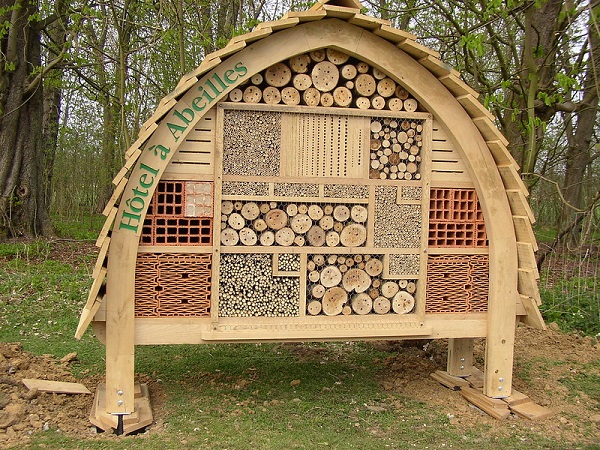Build Your Own Honey Bee Hotel
May 29, 2020
What a great idea!
By now, you are probably very familiar with the habits of managed hives and wild hives, but we will do a quick overview just to be sure.
Managed hives are the hives are generally referring to for beekeepers. These are hives that are usually maintained by beekeepers for the sole purpose of harvesting honey. In many cities across the country, managed hives have also become part of bee advocacy programs to help the honey bee population.
Wild hives also produce honey, but they are not managed and look nothing like the big boxes that generally serve as a managed hive. You will often see these hives hanging from trees, inside trunks, or in some cases, inside the walls of homes and/or businesses. Generally speaking, unlike managed hives, the bees will use the honey to live off during winter months when they are unable to pollinate.
Then there are the solitary bees that live a solitary lifestyle, at least for the most part. In recent years, honey bee hotels have become a very popular way of helping these bees make it through the winters and allowing them to have a home of sorts, albeit not what we would consider being a normal hive.
Bee advocates, of course, would love to see more of these types of hotels put up all around the world, so we are publishing a DIY instructional from Farm and Dairy on how you can build your own honey bee hotel to help our favorite solo pollinators in the area.
Directions:
- Building a hotel frame.You should create a wooden frame that is at least 6 inches deep, 10 inches wide and 12 inches high. Make sure the back is enclosed and the front is open. Next, construct a roof to keep rain from saturating the inside. You may apply one to two coats of Danish oil as a protectant but allow serval days before installation for drying.
- Building nesting blocks.The blocks of wood you’re using should be 6 inches deep, so that they fit the frame you built. In each nesting block, you should drill holes of various diameters, ranging from 1/16-5/8 inches, to attract different bee species. Additionally, hole diameter determines the depth of the tunnel — holes with a diameter greater than 1/4 inch should be drilled 5-6 inches deep and holes with a diameter less than 1/4 should be drilled 3-5 inches deep. Don’t secure your finished nesting blocks with glue because they will need to be replaced yearly. Just stack them to fill the empty cavity in your frame.
- Installing your bee hotel.You’ll need to choose a location that receives direct sunlight for most of the day, facing south to southwest because warmth is important for the growth of bee larva. You’ll also need to ensure your hotel sits 3 to 5 feet off the ground with no vegetation in front of it. After you’ve selected an ideal location, you’ll need to cut a 4×4 post to size and attach it to the back of the frame you built. The best time to install hotels is during the spring; however, hotels will have activity through midsummer.
Source: Farm and Dairy, Photo Courtesy of Ong-Mat via Creative Commons Hotel (picture is not representative of directions posted above).


.jpg)



